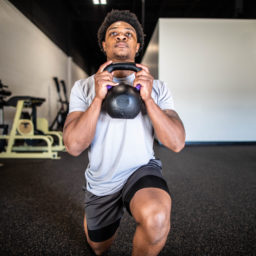What is it?
RPE is a popular technique used by coaches to allow for athletes to self regulate their own workouts. It is used as a way to determine training intensity as opposed to traditional percentage based training.
Distinct Strength training programs utilizes this method when prescribing intensities to give the client a better idea of how hard they should be working for a given exercise.
How to do it
You will want to reference a chart when using RPE as a training intensity. Your coach should provide this as there are subtle differences depending upon what chart they use. None are better or worse than the other it is just a matter of preference and picking the right tool for the job.
Here is the chart I use with my clients. I prefer this scale as it gives a better idea of how each set should feel a little better in my opinion. This is compared to other charts that use descriptions such as “really really hard” or “moderate intensity”. This serves minimal meaning when it comes to strength training, but we can better gauge how many more reps we have in the tank.
[redo scale personally]
**Insert image here**
Here is an example of how I would use this in someones program
Squat 3×8 RPE 8.5
This means that each set the client should complete 8 reps and it should feel as though they could complete 1 or 2 more reps before their form is compromised.
Couple important points here
- Each set will be harder than the previous because of fatigue. Because of this you may have to be a little more conservative on early sets and increase weight as you go to find the sweet spot. You do not want to start too heavy on set one then be too burnt out by the last set and miss reps. As you do it more it becomes clear how each set should feel.
Example: you are prescribed 6×6 at RPE 8
Set 1 and set 6 will feel drastically different. You may want to start more around an RPE of 7 or 7.5 and see how fatigue builds up for week one. Then dial in the weight to a more specific number the following week.
2. Less is more especially in the beginning. When starting any new program especially as someone new or working with a new training system, you want to be conservative.
You will have at least 4 weeks to build up intensity (at least when you are my client) so no need to “shoot your wad too soon”. The more gradually you build intensity the stronger you will be in the long term.
Example: If you think you can complete a given rep scheme at 275 lb, maybe try 265 week one just to be safe and ease into it. You will be better off than starting high and getting your ego crushed the first week and thinking your coach doesn’t know what he or she is doing.
3. It is important to note that beginners have a harder time with the RPE scale because they are not going to be as aware as an advanced lifter on what a true 1RM feels like.
This would look like a novice reporting a max attempt lift <9.5 of RPE scale. This is because they have not yet gained the neurological ability to truly express their true max strength.
With this knowledge it would be wise to only use RPE with experienced lifters.
I have found in practice that it is best when training a novice lifter online for the first time to start with RPE in the first accumulation block. This should be done up until enough volume has been done in the main lift to allow for a true 1RM test to switch over to percent based training.
Conclusion
RPE can be an effective way to read and write training programs. The client should be conservative in the beginning and try to develop more body awareness to better gauge their true rate of perceived exertion.


